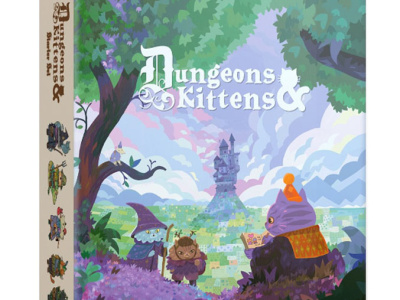Comic orders for Q1 of 2003 were nearly the same as they were in the same period last year (down .5%), after a 9% gain in March balanced drops earlier in the quarter. The March gains reversed a five-month trend of declining sales vs. year ago periods, perhaps indicating a return to the improving comic market that was seen in the first three quarters of 2002.
Periodical comics were up 16% and graphic novels were down 34% in March vs. March 2002. Once again, 2003 book releases were weak for the comic store market vs. 2002. Last year, the first trade paperback collection of G.I. Joe was ordered, as well as a Lone Wolf and Cub volume, two September 11 volumes, and three major Marvel and DC hardcovers in addition to both an Archives and a Masterworks volume. Of releases of that volume, DC had one hardcover book plus an Archives volume this year. For the quarter, comics were up 4% and graphic novels down 33%. This trend mix is unusual for recent years; comic periodicals had been down and graphic novels up during much of the last several years.
Marvel and DC were both up around 15% for March, Image was up 24%, and Dark Horse down around 40%. If current trends continue, CrossGen will be turning the Big Four into the Big Five; it grew 118% in March vs. March 2002 and its market share was larger than Dark Horse's. For the quarter, Marvel, DC, and Dark Horse were down 5%, 4%, and 19%, respectively, and Image was up 18% and CrossGen up 53% vs. 2002.
Marvel, DC, Dark Horse and Image distribute 100% of their comic store orders through Diamond. Some other publishers distribute directly to stores or through other distributors and as a result this analysis may underestimate their sales.
Marvel, DC, Dark Horse, and Image distribute some of their titles through channels other than comic specialty stores, e.g., newsstands and bookstores. These quantity estimates do not reflect distribution through those channels.
The quantities above do not include advance reorders, late orders, or reorders.
Most of the titles on this chart are also distributed to Europe by Diamond UK, which can account for significant sales for the publisher, ranging from 3-20% of the US numbers. Sales by Diamond UK are not included in the numbers above.
Even given the above, however, it is probably safe to say that these quantities reflect 80% or more of the total North American sales by the publisher on most periodical comics.
One other factor to consider is that sales through Diamond and other comic distributors are non-returnable to retailers. That means that there is a considerable unknown percentage of books unsold at the retailer level. If that percentage is 10-20% of sales (a reasonable assumption), the estimates above may be quite close to actual sales to consumers.
For an over-view and analysis of the best-selling comics and graphic novels in March, see 'March Comic Orders Mixed.'
For the top 300 comics in March, see 'Top 300 Comics -- March 2003.'
For the top 50 graphics novels in March, see 'Top 50 Graphic Novels -- March 2003.'
For an over-view and analysis of the best-selling comics and graphic novels in February, see 'Batman Continues To Climb in February.'
For the top 300 comics in February, see 'Top 300 Comics -- February 2003.'
For the top 50 graphics novels in February, see 'Top 50 Graphic Novels -- February 2003.'
For links to all of the Top 300 Comic and Top 300 Graphic Novel orders, see our 'ICv2's Top 300 Comics & Top 50 GN's Index.'







